One thing most people are clear on is that you should drink white, rosé and sparkling wines chilled, but what about red wine? It’s often said red wines should be served at room temperature. The problem here is room temperatures can vary depending on the season and the room.
More importantly, there are some reds that actually taste better when they’re lightly chilled. These tend to be wines that have higher acidity and are light to medium in body, like a Beaujolais or a Pinot Noir.
Take, for example, red wines like Beaujolais Villages and Beaujolais Crus. They have beautiful berry and red fruit notes and chilling them helps to bring out these flavors. You might also find high-alcohol reds, like a Syrah / Shiraz are best lightly chilled, so you taste more of the fruit than the alcohol.
The best temperature for serving red wine
All red wines should be served between 58 and 65 degrees Fahrenheit. This means if it’s summer and it’s 80 degrees in your house, you should definitely put that bottle of red in the fridge or in a bucket of ice and water for 20 to 30 minutes before serving.
But how do you know what temperature a wine is? Should you use a thermometer? You could use a meat thermometer but you don’t really need to. It’s easy enough to just guesstimate by holding the bottle to your cheek. If the glass feels cool, it should be ready to drink. If you think it’s not cool enough, just leave it for another 5 minutes and repeat the test.
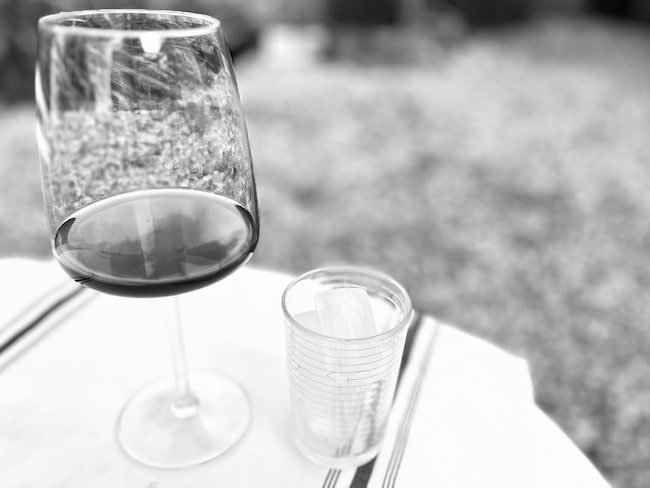
When reds get too warm
What happens to red wine when it’s too warm? Well you may recognize the vinegar taste of a bottle of red that’s been left too long in a hot window or car, but it’s also possible for it to be only slightly warm. It will be drinkable, just not as good as it could be. This is because when wine, both red and white, heats up, the fruit notes are muted and the alcohol becomes more prominent. This can make the wine feel unbalanced and you can lose the aromatics and flavors you chose it for in the first place.
Even in high-end restaurants, it happens that red wine is sometimes served too warm. This brings up the alcohol and mutes the fruit. If you’re out at a restaurant and are served a glass of red that’s too warm, you can drop a few ice cubes from your water glass in, just to cool it down a little. This may sound shocking because it will water the wine down (make sure to choose small ice cubes) but it’s better than only tasting the alcohol. It may also mean you reconsider ordering that second glass.
If it’s a bottle of red that you’ve ordered, don’t hesitate to ask your server for an ice bucket and give it 20 minutes to chill before you drink it. You might be able to get away with drinking it as is, but it would be a waste, especially for a nice red.
Wine Tip: If you can’t tell if a wine is chilled enough, just hold it to your cheek. If the glass feels cool, it should be okay to drink.
Pay attention to temperature variation
When it comes to storing red wine, keep in mind you also want it to be at a constant temperature. In the winter, your cellar may be 55 to 58 Fahrenheit. It may go up by 10 degrees in the summer, but this is a small variation that happens slowly over time. However, quick variations in temperature can really spoil wines.
Consider leaving a few bottles of red or white in the trunk of your car on a hot day. It may be cool enough when the AC is on but as soon as you turn the car off, temperatures will rise quickly. When you get to your destination, the wines might be chilled enough to drink, but the temperature change will have affected them.
This is particularly the case if it got really hot and you were away from your car for a long time. The color of the wines might have changed, the flavors will likely be different, liquid might even have seeped out of the cork. Remember, heat is not good for any wine so if you are transporting bottles, consider keeping a small cooler in your car to make sure they stay at a stable cool temperature the whole time.
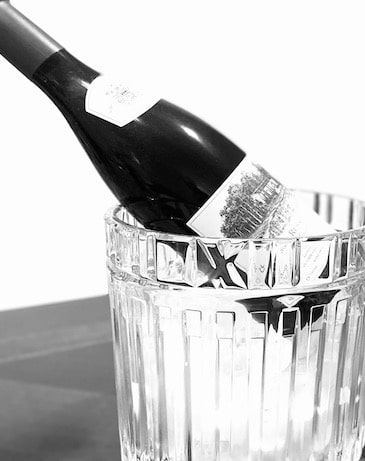
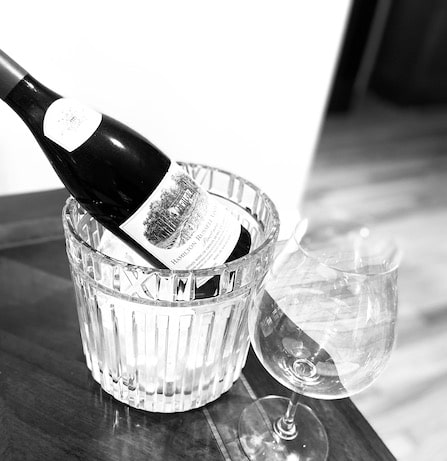
4 Ways to chill red wine
- In ice and water. One of the quickest ways to chill wine is in a bucket of ice and water. It doesn’t need to be a fancy ice bucket, any cooler or large container will do. How much ice should you put in? Fill it halfway and dig the bottle in a bit. You don’t have to put water but this will make it chill down quicker. If you do add water, you want a 50/50 ratio with the ice.
- In the fridge. We know it can be intimidating to put reds in the refrigerator, but this is actually a perfectly suitable way of chilling them. Note, it can take a little more time to chill wine this way, depending on how warm it is and how cold your fridge is. Start by putting bottles in for 25 to 35 minutes and take them out every so often to check if they’re chilled and ready for serving. Just like a white, you can serve red wine directly from the fridge. If you’re worried it will quickly heat up again or if you try it but it’s still not ready, it’s okay to re-cork the wine and put it back in. Just don’t put wine that’s been decanted back in the fridge without covering it. It will pick up the odors of the food in the fridge and this can really affect it.
- Outside. If it’s cold enough, you might just stick your wines outside for a bit until they’re chilled. This is especially helpful during winter holidays when your fridge might be fairly full and/or you are serving several bottles that need to be chilled at once. In early spring or late fall the temperature can be perfect for chilling wine gradually. Look for a shaded place to be sure the wine isn’t exposed to direct sunlight. Depending on how cold it is out, plan to leave the bottles outside to chill for 30-60 minutes.
- In the freezer. If you’re planning on serving a red that you need to chill quickly, we recommend a bucket of ice and water. If you don’t have this, you can use the freezer, just make sure you don’t forget about the wine! It’s a lot easier to forget wine in the freezer than you might think, especially if you’re busy preparing a multi-course dinner or getting ready to host friends. When you put wine in the freezer, pay attention to how much time it spends in there and always use a timer or set an alarm. You should never leave wine in the freezer for longer than 30 minutes.
Top tip: If you find yourself chilling wine in the fridge often, you might even designate a special shelf for bottles in your refrigerator!
Other options
If it’s summer and you’re hosting a barbecue, you can chill red wines in a cooler. As we mentioned, this is also a great method for transporting them in a car where the wines might be exposed to extreme temperature variation. If you don’t have enough space in your cooler, try just laying the wine on top of some ice packs and turning it every so often. Learn more about the best red wines for summer and how to chill them before serving in this article.
If you’re by the water and the water is cool, you could also submerge it, just be sure it won’t float away or be pulled out to sea by a wave! If it’s an older wine that may have sediment, make sure the bottle stays upright and isn’t shaken around while it’s cooling. Also, consider the label could get damaged. If you find yourself in a northern climate in the wintertime, snow is one of the best ways to chill red wine. Stick a few bottles in the snow for 20 to 30 minutes.
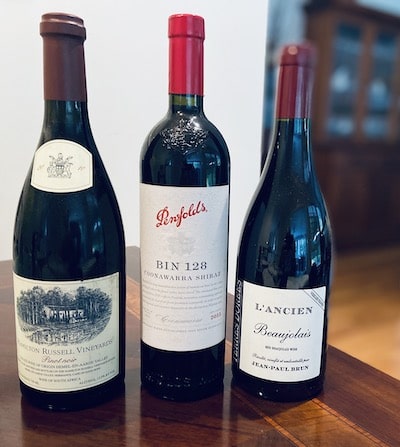
Reds that taste best when slightly chilled
Any red wine will taste better in the 58 to 65 Fahrenheit range but some wines are always best chilled. These tend not to be full bodied reds like Merlot, but more Gamay, Grenache-based wines that are light to medium in body and have higher acidity.
Beaujolais
The wines of Beaujolais are fruit forward, not overly high in alcohol and have great acidity. They offer a basket of berries on the nose with raspberries, blackberries, cherries, and red fruit that is bright and fresh. You should always serve this wine slightly chilled so you can get these flavors. You can put Beaujolais in a bucket of ice water for half an hour or just chill it in the refrigerator before serving.
Côtes-du-Rhônes
Côtes-du-Rhônes are wines from the Southern Rhône region in France. They’re Grenache based and can be quite high in alcohol with notes of strawberry, raspberry, plum, blackberry and black currant. To fully appreciate this wine, you should be serving it slightly chilled.
Pinot Noir
Pinot Noir is a light to medium-bodied red wine that has a light color and notes of cranberry, raspberry and cherry. The fruit comes out best when serving the wine slightly chilled, so its alcohol is less prominent.
Cabernet Sauvignon and Malbec
When serving a Cabernet Sauvignon or a Malbec, you want to make sure it’s slightly chilled. It should be in the 60 to 65 degree range, especially a Cabernet or Malbec that’s high in alcohol, which these wines tend to be. For example, you might have a Napa Cabernet that is 15% alcohol and if it’s served too warm, that alcohol will overpower the natural flavors and dominate. You could end up not getting the layers of fruit and complexity you bought the wine for in the first place.
Rioja
With Rioja, if you’re drinking a Crianza which is the first aging category of Rioja that is only slightly oak-aged, you’ll find it is fruit dominated. You want to be able to taste the fruit so we recommend chilling this wine slightly before serving it.
Note, you might also want to chill Dolcettos from Northern Italy and some Cabernet Francs from the Loire Valley.
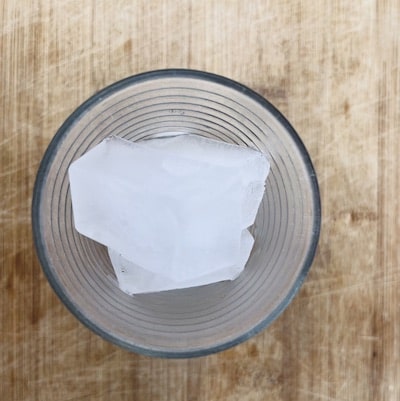
Troubleshooting wine that’s too cold or too warm
Too Cold
When wine gets too cold you can’t taste the flavors in it, as we’ve discussed. If the wine hasn’t gone below 40 Fahrenheit, it should be okay when it warms up. However, if it has been left overnight in a cold car in the winter with freezing temperatures, or spent too much time in the freezer while chilling, the wine can be damaged.
There are a few things that could happen. For one, the bottle could burst and the cork could push out. The flavors may be damaged when frozen wine melts and also, you’re really going to need to drink the wine right away because it will no longer be age-able.
Too Warm
When you’re handling wine in the summertime you have to keep a mini fridge or cooler handy, whether it’s red, white, rosé or sparkling, to ensure it’s chilled. Once a bottle of wine heats up beyond 74 to 75 degrees, it gets damaged. This is one reason not to store red wines in the kitchen –particularly not over a stove, which is the hottest spot in the house!
So, how do you know if it’s salvageable? If the cork has pushed up and wine has seeped out of the bottle and dripped along the label, you have to open it and try it. Chill it down first and if the wine tastes off, or like it’s been slightly cooked, it might be a lost cause. Note, wine won’t taste like vinegar right away, that happens over a period of 2 to 3 weeks at high temperatures, or if it’s been opened and stored for a longer period in a hot location.
How to store your reds at home
If you have a fieldstone cellar or a generally cool cellar, you can keep your wines there because it’s dark. The most important thing is not having a lot of variation in temperature in the environment where the wine is, as this is something that can really mess up a wine. You can also try putting bottles of wine on a closet floor. The lower in the room and the darker, the better.
If you don’t have a cellar and live in an apartment that tends to get hot, you might consider buying a temperature and humidity controlled wine refrigerator.
This is especially important if you’re buying higher priced and higher value wines that you want to protect. Storing wine in high temperatures is going to make it age quicker and can cause the wine to seep through the top. Also, if it’s too warm it could make the wine go bad. This is why it’s crucial, as we’ve said above, not to keep your wines in a hot kitchen (unless they’re in a fridge).
It’s also important to keep wine away from direct light, especially sunlight and ultraviolet light. Avoid placing a wine rack by a window or a glass door and instead choose some place dark, low and cool like an inside wall, a closet or under a side-table.
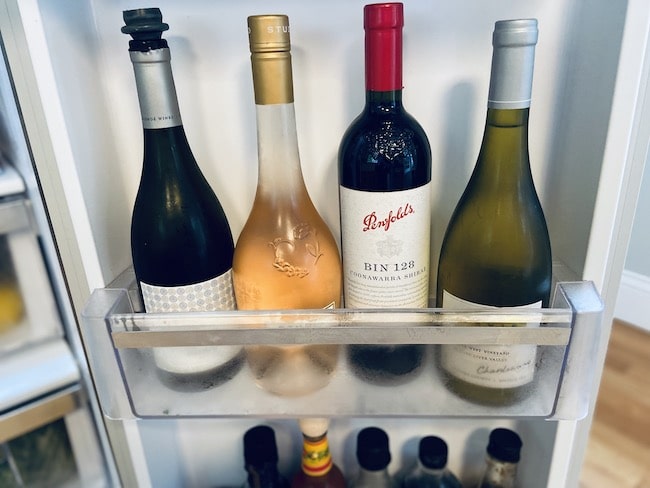
Do you still need to chill red wine that’s been stored in the cellar?
The answer is, yes, sometimes you do. If it’s summer and your cellar is a bit warmer than usual, you might want to put a red in the fridge to chill for 15 to 20 minutes before serving. Where you’re storing the wine should be fine for keeping it stable but if you want to taste the fruit flavors in say an older Napa Cabernet, chilling it slightly before drinking is always a good idea. At the end of the day, use what you know about the place where the wine has been stored, how the bottle feels, and the room where you’ll be drinking the wine. Next, try the aforementioned chilling techniques to bring it down to the right temperature before serving.
Do you need a wine fridge?
Wine fridges are good because they keep wine at the right temperature, and some wine fridges have separate compartments so you can chill your reds and whites to different temperatures.
Some of the best fridges also allow you to control for humidity, which is important. Cold air tends to be drying and if it’s not humid enough where the wine is being stored, the cork can dry up. This means air can get into the bottle and the wine can spoil or the cork might break and crack when you’re opening the wine.
A large refrigerator made for wine is called a wine storage unit. You may know that wine collectors and fine dining restaurants tend to have these temperature controlled rooms because they buy wines with the intention of aging them to drink, serve, or keep as an investment.
Top Tip: if you’re going to age a bottle of red for 10 to 15 years and you keep it cooler, it won’t age as quickly, so it remains drinkable for a longer amount of time.
There are wine fridges for every budget, but if you aren’t a collector and you just want to keep your reds at the right temperature, you probably don’t need one. That is, unless you don’t have a cool place to store wine where you live. You might also just want to keep a certain amount of bottles chilled and ready to drink on demand.
How cold should whites and sparkling wines be served?
You don’t want to overchill any wine, even a white or a sparkling wine. If you chill a wine too much, you’ll mute some of its flavors and the aromatics. Whites, sparkling wines and rosés are best at 40 to 45 degrees.
Sometimes people serve white wine at 34 or 35 degrees, which is just too cold. This is especially the case for sparkling wines. We tend to think of sparkling wines as needing to be consumed very cold, and while it’s true that these wines should be ideally chilled to 38 to 40 degrees before serving, if they’re any colder, you’ll lose the character of the wine and you won’t get the full bouquet of flavors and aromatics. As the wine warms up, they’ll come out, so if you feel your sparkling wine and it seems too cold, give it 10 to 15 minutes to sit before drinking.


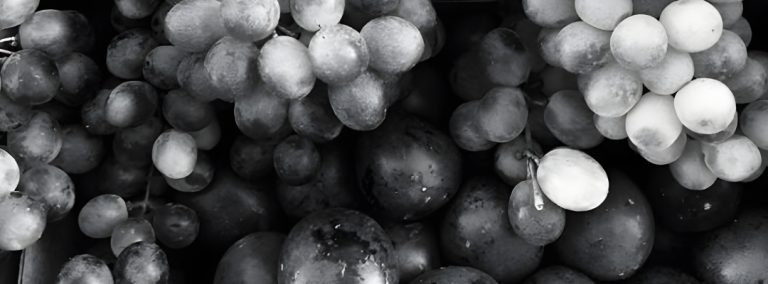



Loving this , great info. Will be passing on your website
Glad you like it! I know you know all this info already but please feel free to pass it on to anyone who it might help. We want more people to really be able to taste their reds! Look forward to seeing you tomorrow.
Fantastic!
I’ve shared this article with some of my savvy and curious younger colleagues , who are learning wines!
Temperature was key for me in my wine evolution !
We’re happy that you like it and thanks for sharing with your colleagues. So many people don’t think about temperature when it comes to red wine, and they really end up missing out.
Congratulations Meredith and Freddy!!! You have found a hole in the universe that needed to be filled and you filled it. Just think of all of the other Father/Daughters that have not filled the need.
Meredith, I only know you via your pictures and stories from your Dad, but as you know well know , he is a great storyteller.
It is a fantastic venture that you are embarking on and I wish to both of you great success. If you don’t know it already, the wine community can be very generous with their time and assets when it comes to promoting someone promoting and supporting their industry.
The work will be fun, interesting and rewarding. Enjoy every moment of every day.
God bless and be well.
Tom.
So good to hear from you Tom. Haven’t seen you for a while and hope all is well. We’re excited to be writing about wine and helping more people get to know what they’re drinking (and find more wine they like!) It’s so rewarding to be able to work together with Meredith on this too.